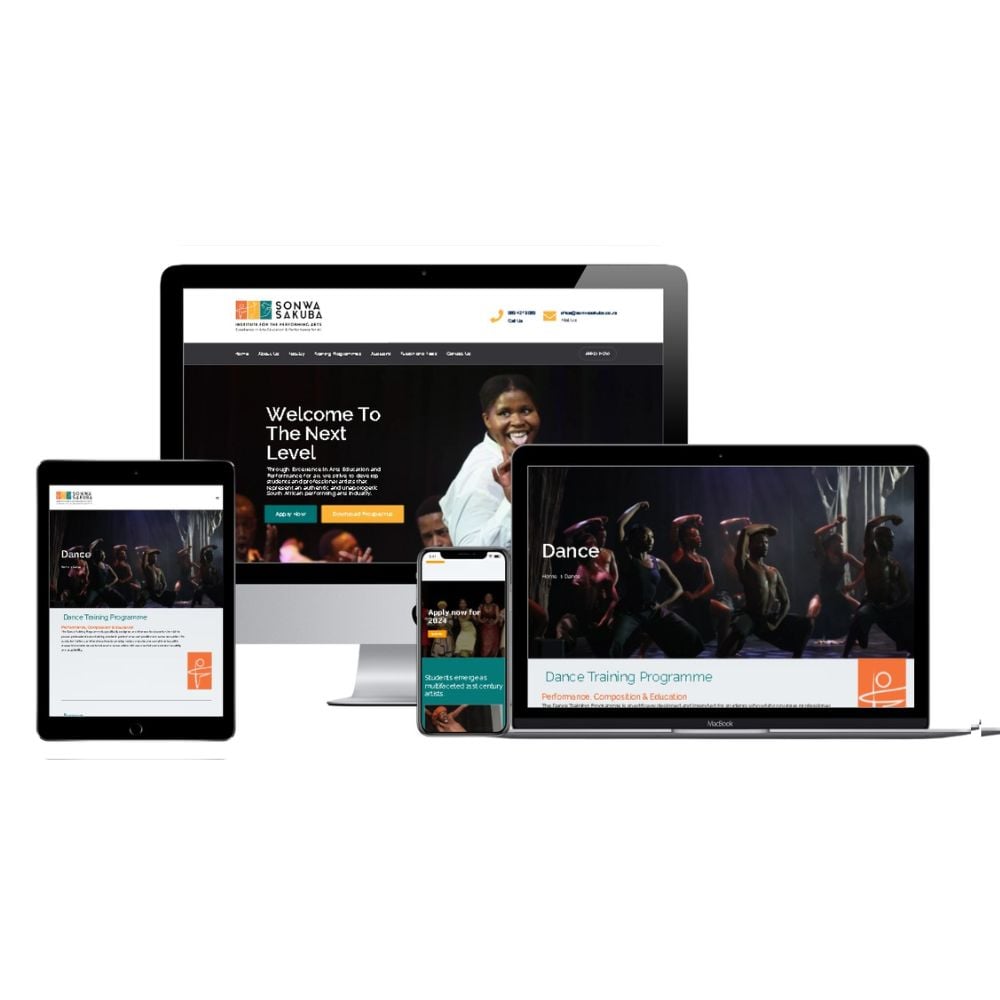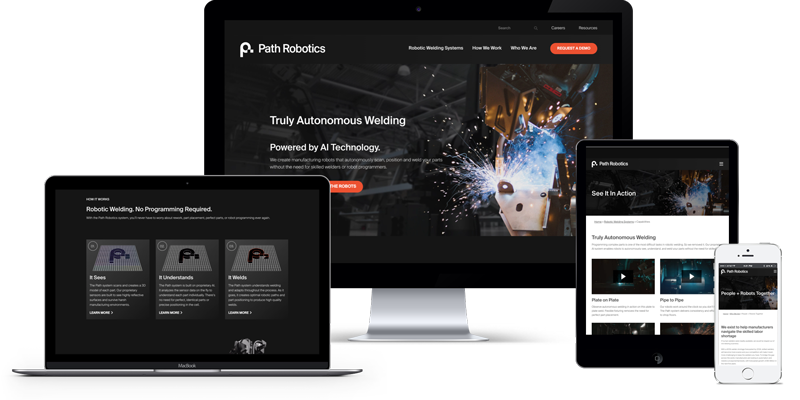The Effect of Receptive Attributes on Your Website Design Success
Wiki Article
Key Techniques for Executing User-Centric Web Site Design to Increase Interaction
When taking into consideration the application of user-centric site design, particular methods are important in increasing engagement. Thorough study into customer requirements and choices creates the foundation, assisting the development of user personalities to educate layout options. Customizing content boosts user satisfaction, and durable access functions broaden reach.Recognizing User Requirements
Comprehending user demands is an essential action in the procedure of user-centric website style. This approach makes sure that the website lines up with the assumptions and demands of its target market, ultimately bring about enhanced individual satisfaction and involvement. The initial phase includes performing complete study to gather understandings right into individual actions, choices, and pain points. Strategies such as studies, interviews, and customer screening can provide beneficial qualitative and quantitative information regarding how individuals engage with the web site.Examining this information enables designers to produce comprehensive individual characters that stand for the various sectors of the target market. These personas aid educate design choices by highlighting specific user objectives and obstacles, leading the growth of attributes that attend to these requirements successfully. Recognizing the context in which individuals operate-- such as their environment, device preferences, and time constraints-- can better improve the style method.
Empathy plays a vital duty in this procedure, making it possible for designers to see the site from the individual's perspective. By focusing on user demands, the style process becomes extra concentrated, avoiding the inclusion of unneeded components that might mess the individual experience. Eventually, a deep understanding of individual needs contributes in crafting a site that is both functional and significant.
Designing Instinctive Navigation
Having actually established an extensive understanding of customer demands, the following action in user-centric internet site design entails creating intuitive navigation. Reliable navigation is essential to customer satisfaction, affecting how conveniently individuals can locate info and full tasks. To attain user-friendly navigating, designers should focus on simpleness and quality, making sure that the navigation framework is regular and logical throughout the site.Organizing material right into a clear pecking order is essential. Website Design. The usage of acquainted tags and symbols can assist customers effortlessly, minimizing cognitive lots and boosting the general customer experience. A properly designed navigation bar ought to be prominently put, allowing individuals to recognize their existing area and conveniently discover various other sections of the website
It is also crucial to integrate interactive components such as breadcrumbs and search functionalities to assist users in navigating complex sites. These features provide additional pathways and boost the accessibility of content, accommodating numerous customer choices and habits.
Testing navigating with actual individuals is vital to determine potential discomfort points and guarantee functionality straightens with customer assumptions. Routine feedback loopholes and iterative renovations can assist keep an effective navigation system that adapts to evolving individual demands, ultimately boosting involvement and fulfillment.
Producing Receptive Interfaces
Usually, producing receptive interfaces is a crucial element of modern internet design, making certain that sites are functional and easily accessible across a wide variety of devices and display dimensions (Website Design). This adaptability is vital in a landscape where individuals access material using more info here smartphones, tablets, desktop computers, and laptops, each with varying orientations and resolutions. The main objective of responsive style is to boost user experience by preserving optimum readability and usability, no matter of the gadget utilizedTo achieve this, internet designers use versatile grid layouts, liquid pictures, and CSS media questions. Adaptable grids permit website elements to resize proportionally, while fluid images make sure visuals range suitably without shedding quality. Media questions play an important function by applying different styles based on the tool's characteristics, such as positioning, width, and height, hence customizing the format to the customer's display.
In addition, receptive user interfaces add to improved search engine optimization (SEARCH ENGINE OPTIMIZATION) by supplying a smooth individual experience, which consequently can decrease bounce rates and rise website interaction. In recap, taking on responsive design is not merely a technological factor to consider however an essential strategy for cultivating a user-centric web environment that fulfills the requirements of a diverse target market.

Individualizing Content Experience
Personalizing content experience is a crucial component of user-centric website design that entails customizing web content to satisfy the distinct preferences and actions of specific customers. This method not only boosts customer contentment however likewise fosters much deeper interaction, as visitors are more most likely to engage with material that resonates with their demands and interests. By leveraging data analytics and user comments, organizations can determine patterns and fads that educate the modification of web material.visit here Integrating customization methods can range from straightforward adjustments, such as suggesting items based upon searching history, to much more sophisticated methods like vibrant material that adjusts in real-time to an individual's communications. Customized landing pages can dramatically enhance conversion prices by giving users with relevant information and offers that align with their previous tasks and choices.
Furthermore, utilizing artificial knowledge and artificial intelligence can further refine material customization by continuously gaining from individual behaviors and adapting to emerging patterns. This not just improves the customer's journey but likewise builds brand name loyalty, as clients really feel comprehended and valued. Ultimately, individualizing the web content experience is an essential method for organizations intending to produce a much more appealing and significant interaction with their audience.
Enhancing Access Attributes
Enhancing access features is an essential facet of user-centric website style, making certain that digital material is functional by every person, including people with handicaps. This technique not just follows legal standards such as the Americans with Disabilities Act (ADA) and the Internet Material Availability Standards (WCAG) yet also substantially widens a website's target market reach. By integrating features like keyboard navigating, display reader compatibility, and alternative message for images, web sites become more comprehensive, supplying a seamless experience for users with visual, auditory, or electric motor impairments.Including responsive style components is essential, promoting gain access to on numerous devices and display sizes, therefore fitting users with various try this web-site preferences and demands. Contrast proportions and message size changes can boost readability for individuals with aesthetic difficulties. Offering concise and clear material framework, such as checklists and headings, aids comprehension and navigating, particularly for customers with cognitive disabilities.
Regular availability audits should be carried out to recognize and rectify prospective obstacles, making certain ongoing compliance and functionality. By prioritizing access, services not only foster inclusivity however likewise boost total user interaction and contentment, eventually driving higher conversion prices and enhancing brand commitment.

Final Thought
Incorporating user-centric layout methods considerably boosts site involvement by prioritizing the requirements and choices of users. Detailed research study promotes the creation of individual personas, directing targeted layout decisions. Intuitive navigating and receptive interfaces enhance use and accessibility across tools. Personalizing material based upon customer actions enhances fulfillment, while durable access features broaden audience reach. Jointly, these approaches develop a significant on-line experience, fostering deeper engagement and interaction with the web site.Extensive research study into user needs and preferences creates the structure, leading the development of individual identities to notify style options. Techniques such as surveys, meetings, and customer screening can supply important qualitative and quantitative data about just how customers interact with the website.
By focusing on individual needs, the design procedure ends up being much more focused, preventing the incorporation of unnecessary components that might mess the individual experience. Reliable navigation is basic to customer satisfaction, affecting exactly how easily customers can find details and total tasks. The usage of familiar tags and icons can guide individuals effortlessly, lowering cognitive tons and boosting the general customer experience.
Report this wiki page